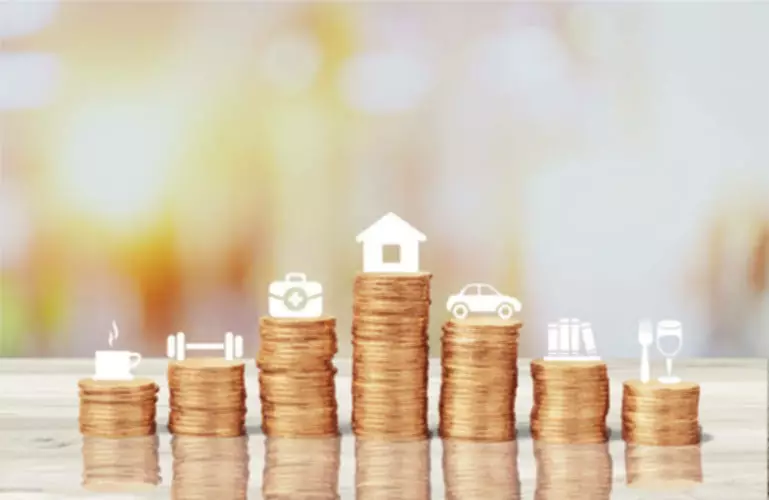Bookkeeping
Salvage Value Uses, Importance, Calculation and Example
Content
- How to Calculate Depreciation
- Prime Cost Depreciation Method
- The Yellow Standard: Why Construction Equipment is Always Yellow
- How to Calculate Salvage Value (Step-by-Step)
- Salvage Value of PP&E Calculation Analysis (“Residual Value”)
- How do you calculate an asset’s salvage value?
- Methods of Rainwater Harvesting : Components, Transportation, and Storage
- What are Other Types of Depreciation Methods?
The Financial Accounting Standards Board (FASB) recommends using “level one” inputs to find the fair value of an asset. In other words, the best place to find an asset’s market value is where similar goods are sold, or where you can get the best price for it. When you’re using straight-line depreciation, you can set up a recurring journal entry in your accounting software so you don’t have to go in and manually prepare one every time. Annual straight line depreciation for the refrigerator is $1,500 ($10,500 depreciable value ÷ seven-year useful life).
We’re firm believers in the Golden Rule, which is why editorial opinions are ours alone and have not been previously reviewed, approved, or endorsed by included advertisers. Editorial content from The Ascent is separate from The Motley Fool editorial content and is created by a different analyst team. You can still calculate depreciation https://www.bookstime.com/articles/how-to-calculate-salvage-value without a salvage value; just put a $0 in any place where you need to enter a salvage value. Using the formula above, we can calculate the potential salvage value of the dishwasher. The salvage value is the theoretical price based on the original price and depreciation, but acquiring that value in a sale is much more difficult.
How to Calculate Depreciation
Double declining balance is the most widely used declining balance depreciation method, which has a depreciation rate that is twice the value of straight line depreciation for the first year. Use a depreciation factor of two when doing calculations for double declining balance depreciation. Regarding this method, salvage values are not included in the calculation for annual depreciation.
To appropriately depreciate these assets, the company would depreciate the net of the cost and salvage value over the useful life of the assets. The total amount to be depreciated would be $210,000 ($250,000 less $40,000). If the assets have a useful life of seven years, the company would depreciate the assets by $30,000 each year. The majority of companies assume the residual value of an asset at the end of its useful life is zero, which maximizes the depreciation expense (and tax benefits). In summary, the estimated salvage value of an asset is a critical consideration in financial planning, asset management, and capital budgeting.
Prime Cost Depreciation Method
Similar to declining balance depreciation, sum of the years’ digits (SYD) depreciation also results in faster depreciation when the asset is new. It is generally more useful than straight-line depreciation for certain assets that have greater ability to produce in the earlier years, but tend to slow down as they age. You calculate the depreciation value of an asset and expense it equally through the useful life of that asset until you reach its salvage value. For book purposes, most businesses depreciate assets using the straight-line method. Salvage value, in simple terms, is the worth of an asset after its useful life.
How do you calculate salvage value in Excel?
- Salvage Value =INR 100,000 – (INR 10,000 * 7)
- Salvage Value =INR 100,000 – 70,000.
- Salvage Value = INR 30,000.
This difference in value at the beginning versus the end of an asset’s life is called “salvage value.” If your business owns any equipment, vehicles, tools, hardware, buildings, or machinery—those are all depreciable assets that sell for salvage value to recover cost and save money on taxes. Conceptually, salvage value is merely what your business expects to earn if you were to resell an asset after you’re finished using it. There’s no specific formula for calculating salvage value, but a business should have a standardized process for depreciating its assets and recording their book value.
The Yellow Standard: Why Construction Equipment is Always Yellow
Conceptually, depreciation is the reduction in the value of an asset over time due to elements such as wear and tear. Salvage value is very important for a business as it influences the company’s depreciation expense. The company tries to make the best depreciation value possible that may not be a definite number. The significance of salvage value is that it allows to calculate the value of depreciation especially for calculating depreciation of an construction equipment.
- The matching principle is an accrual accounting concept that requires a company to recognize expense in the same period as the related revenues are earned.
- The fridge’s depreciable value is $10,500 ($11,500 purchase price minus the $1,000 salvage value).
- The difference between the asset purchase price and the salvage (residual) value is the total depreciable amount.
- As a business owner, knowing how to calculate straight line depreciation of your company’s fixed assets is crucial to your business’s success.
- Using the formula above, we can calculate the potential salvage value of the dishwasher.
- A company uses salvage value to estimate and calculate depreciate as salvage value is deducted from the asset’s original cost.
Let’s say the company assumes each vehicle will have a salvage value of $5,000. This means that of the $250,000 the company paid, the company expects to recover $40,000 at the end of the useful life. Get instant access to video lessons taught by experienced investment bankers. Learn financial statement modeling, DCF, M&A, LBO, Comps and Excel shortcuts. As a quick example, let’s say you’re currently attempting to determine the salvage value of your car, which you purchased four years ago for $100,000. Under straight-line depreciation, the asset’s value is reduced in equal increments per year until reaching a residual value of zero by the end of its useful life.
How to Calculate Salvage Value (Step-by-Step)
The difference between the asset purchase price and the salvage (residual) value is the total depreciable amount. The useful life assumption estimates the number of years an asset is expected to remain productive and generate revenue. The Salvage Value refers to https://www.bookstime.com/ the residual value of an asset at the end of its useful life assumption, after accounting for total depreciation. The value of machinery (any manufacturing machine, engineering machine, vehicles etc.) after its effective life of usage is known as Salvage value.
Sometimes businesses don’t intend to resell an asset or can’t sell it at the end of its useful life. Reselling the asset is not required for depreciating it or calculating its salvage value for accounting purposes. Salvage value is part of every depreciation method and required for accurately valuing your assets and business. Companies have several options for depreciating assets on their books, but the most popular is the straight-line depreciation method. Residual value is defined as the estimated value of a leased asset at the end of its lease period or lease term.
Salvage Value of PP&E Calculation Analysis (“Residual Value”)
This method requires an estimate for the total units an asset will produce over its useful life. Depreciation expense is then calculated per year based on the number of units produced. This method also calculates depreciation expenses based on the depreciable amount. An asset’s depreciable amount is its total accumulated depreciation after all depreciation expense has been recorded, which is also the result of historical cost minus salvage value.
What is total loss car insurance? – Yahoo Finance
What is total loss car insurance?.
Posted: Tue, 30 May 2023 13:00:35 GMT [source]


